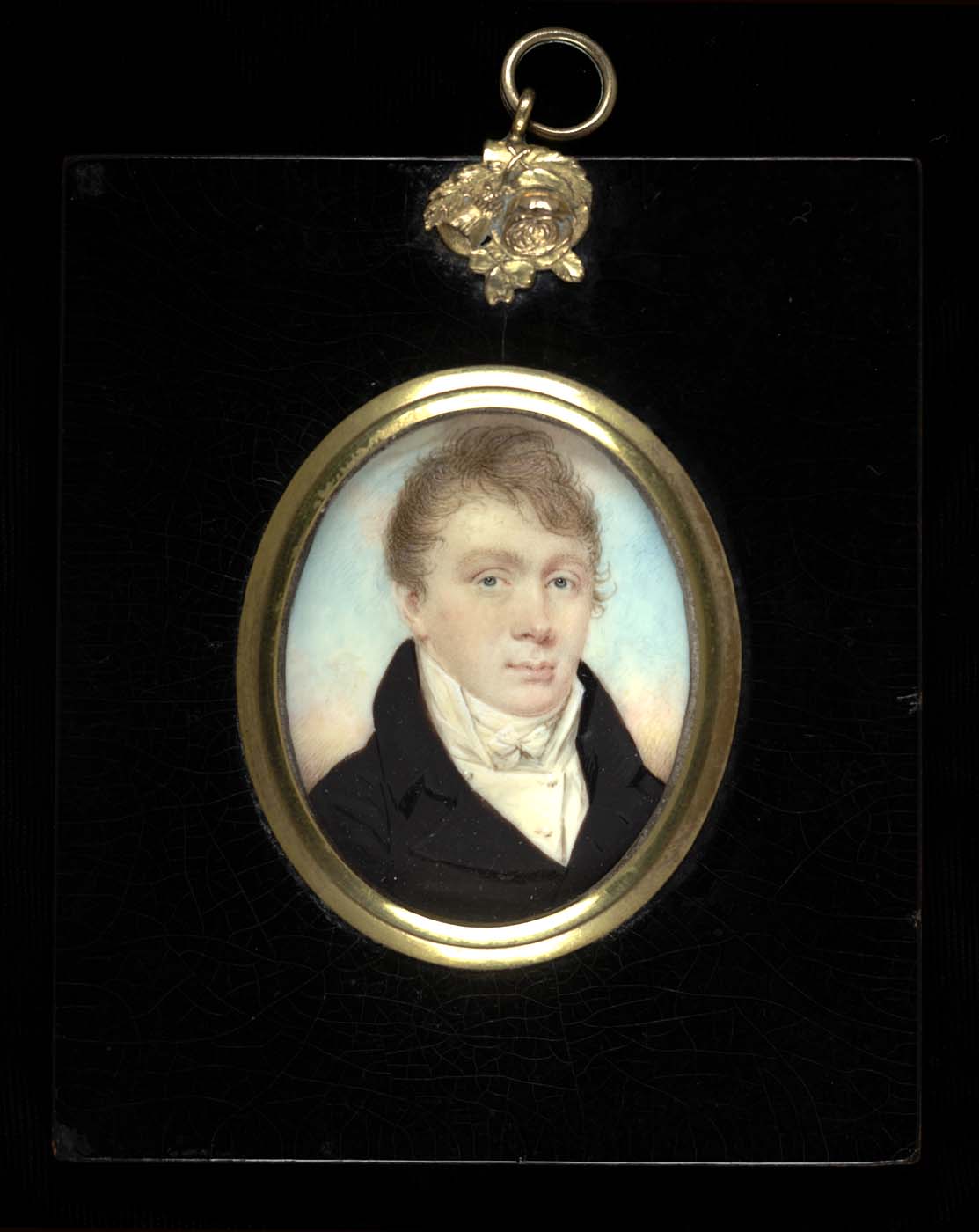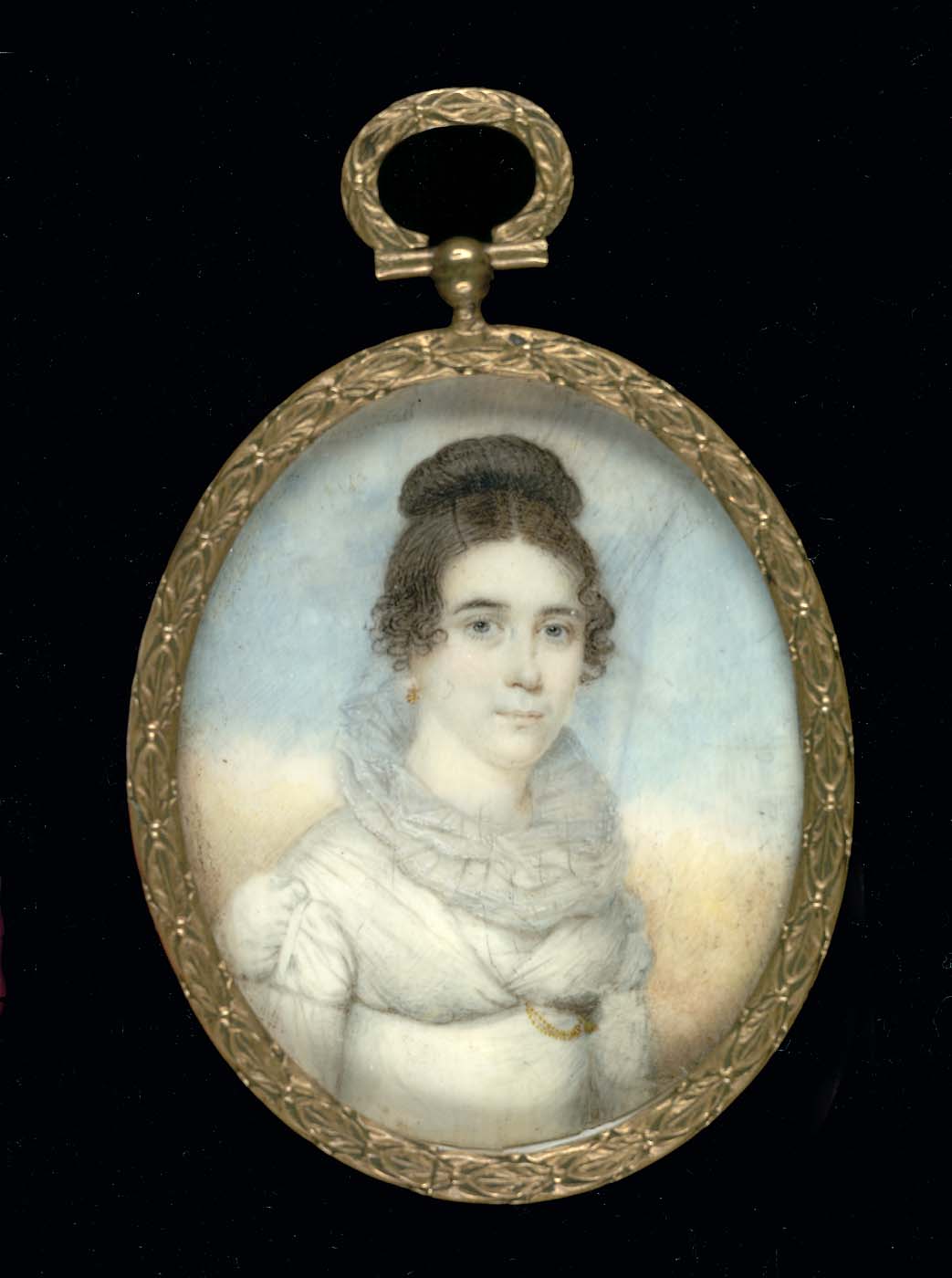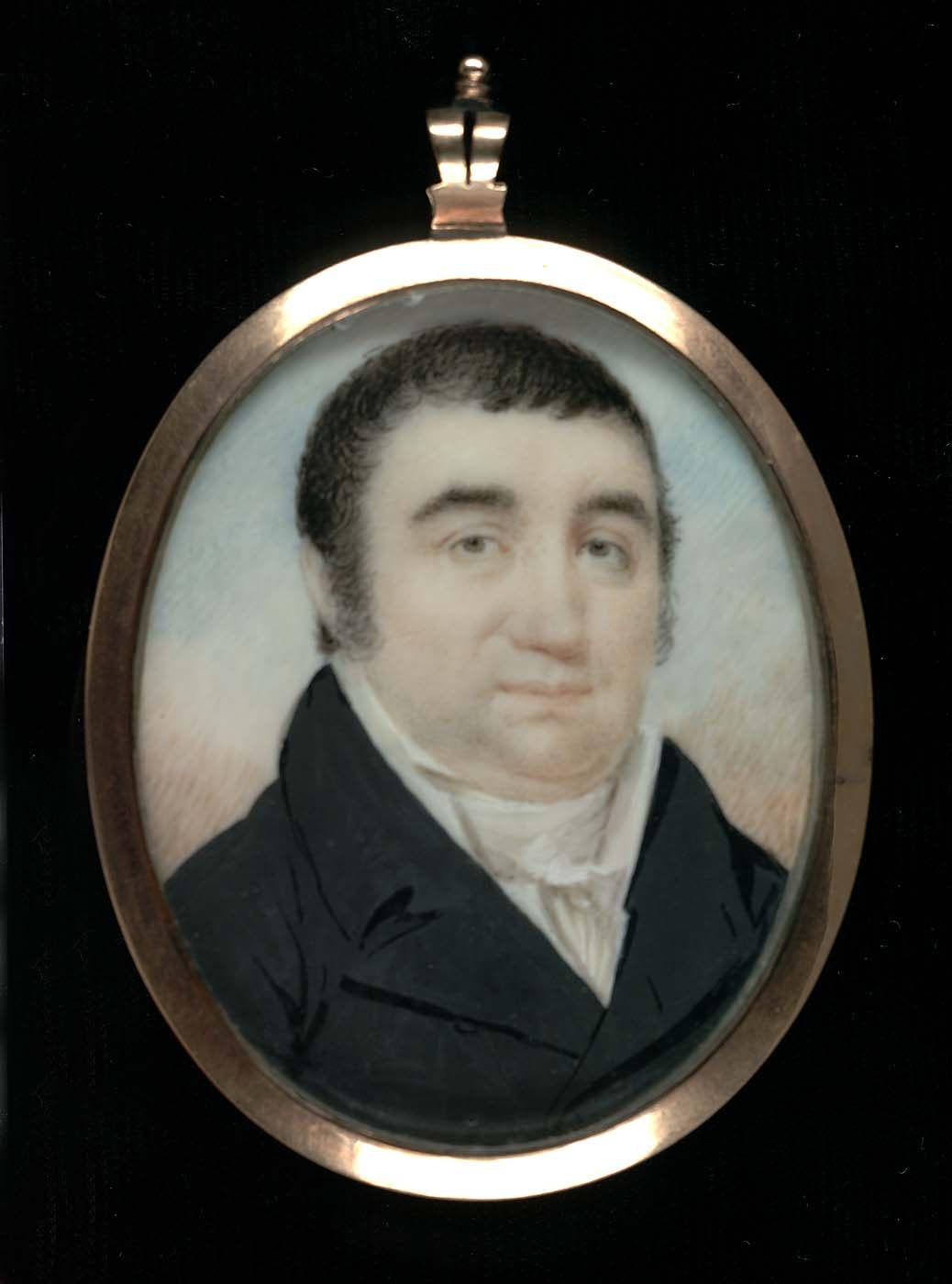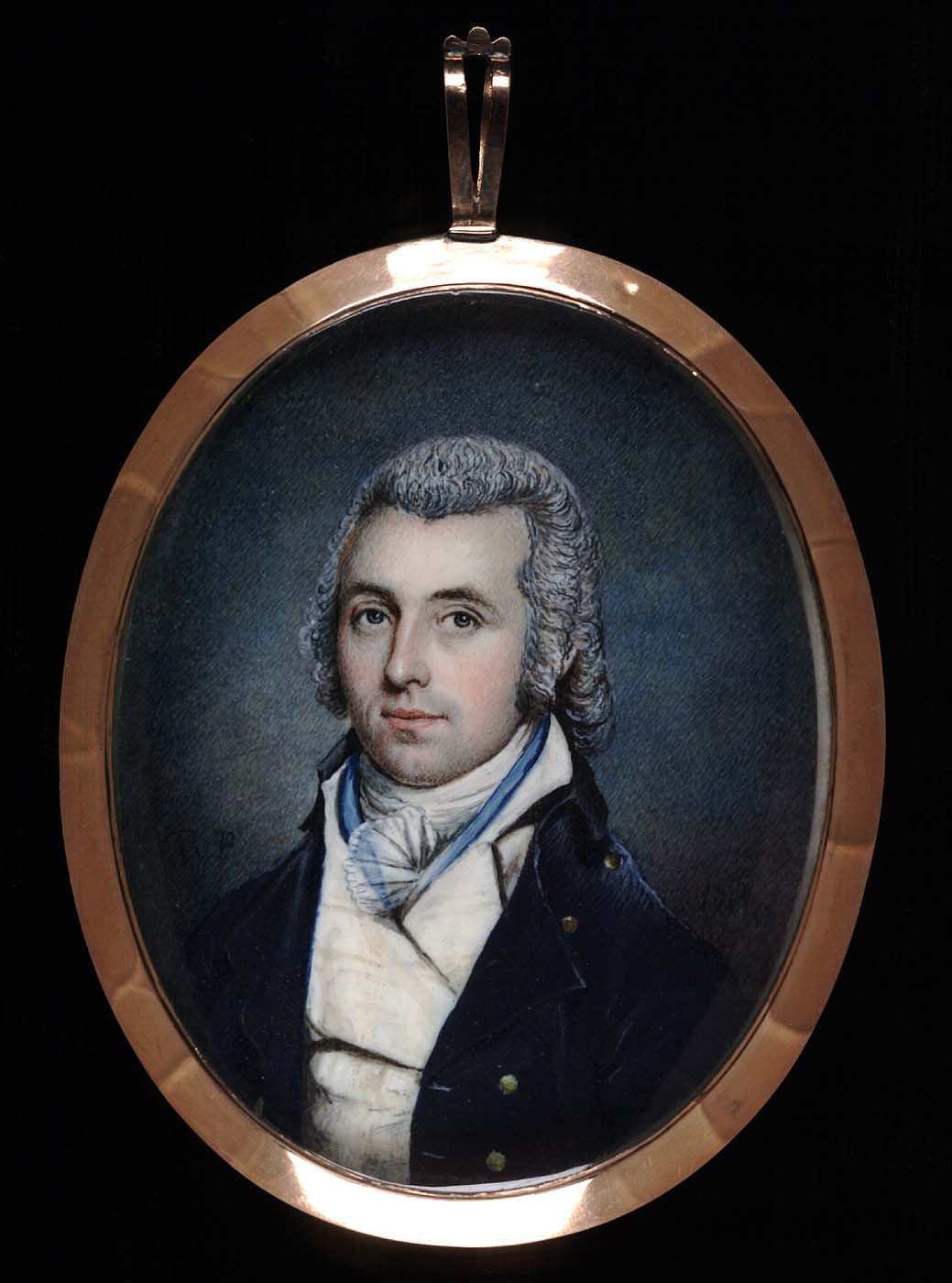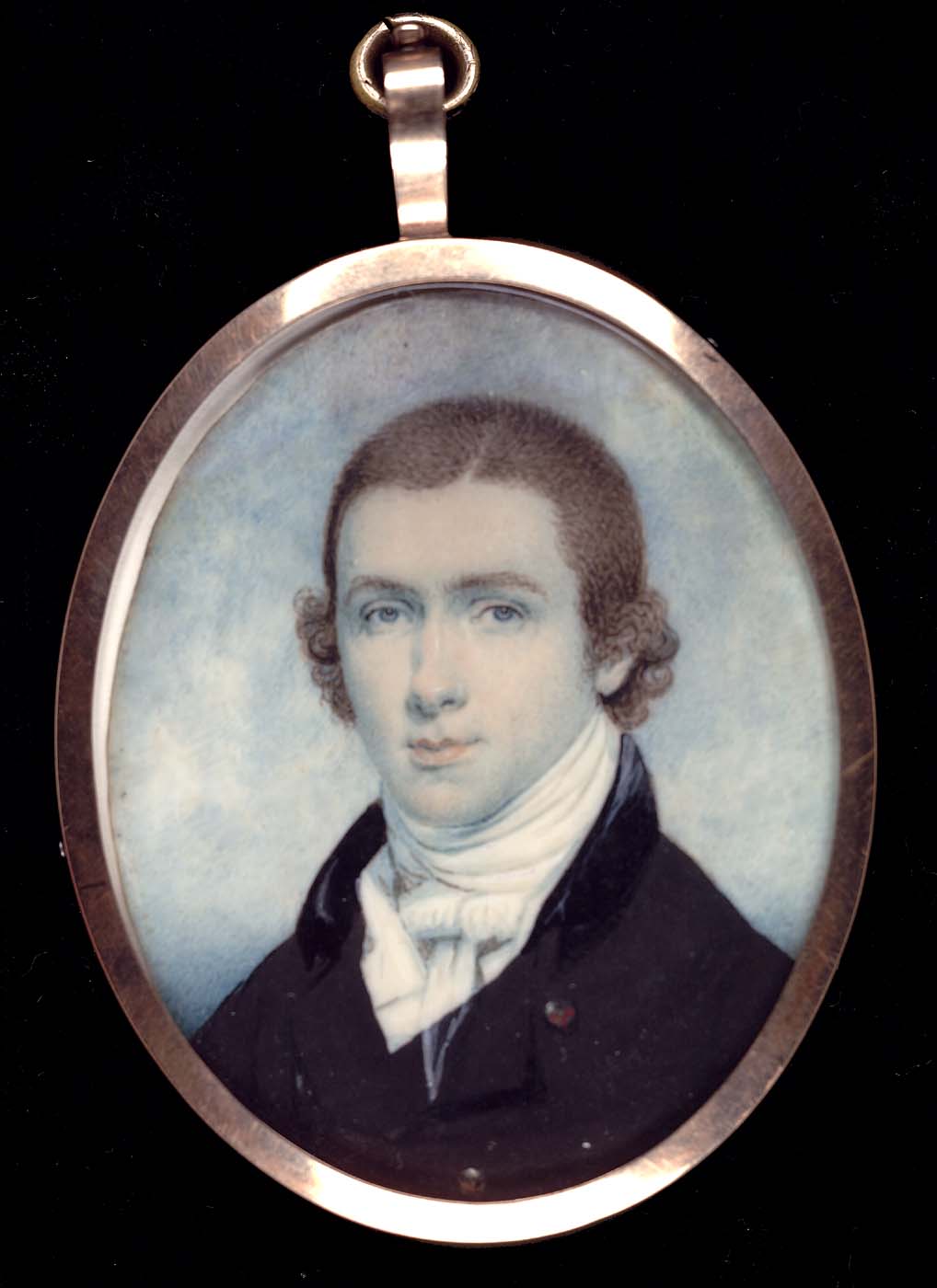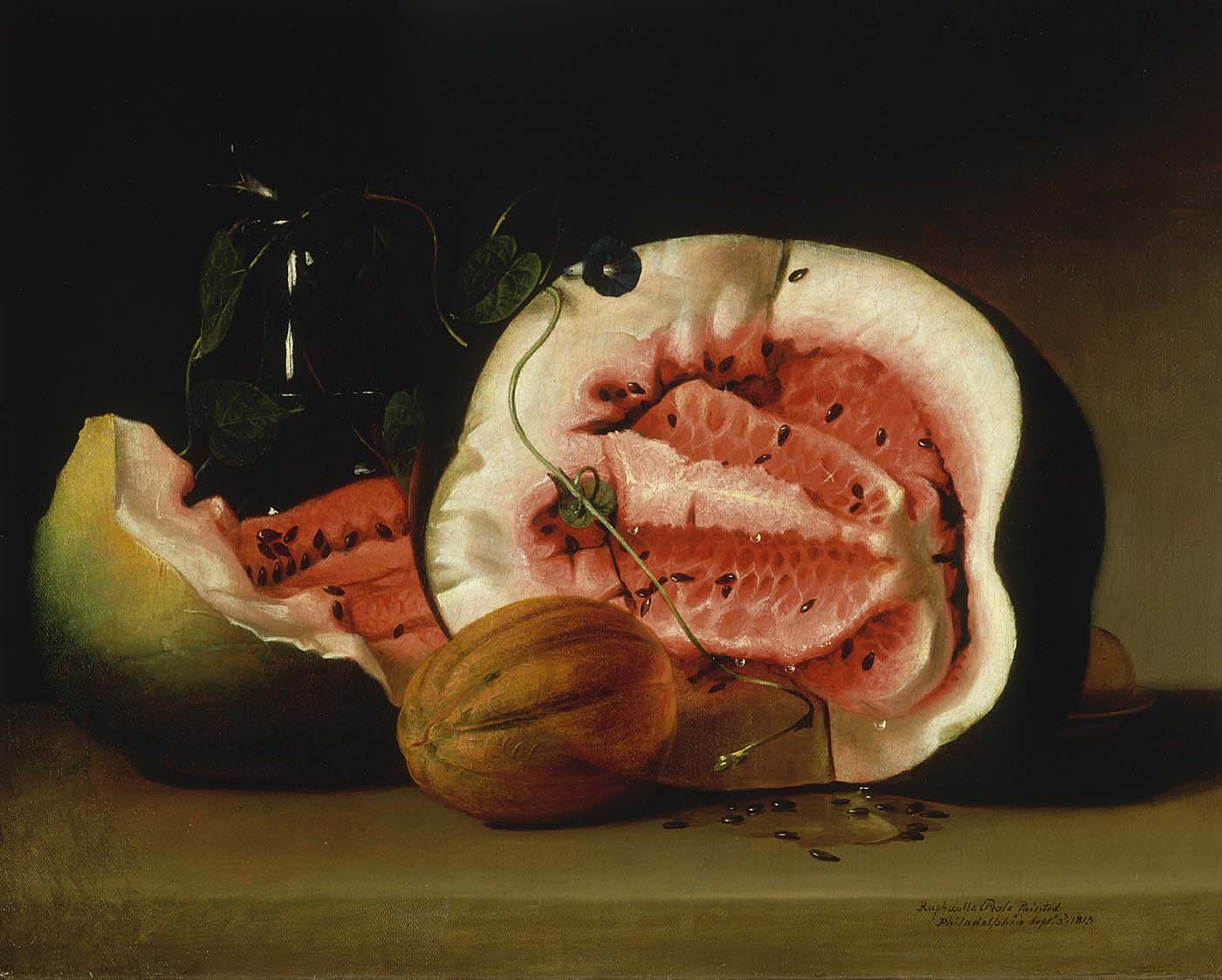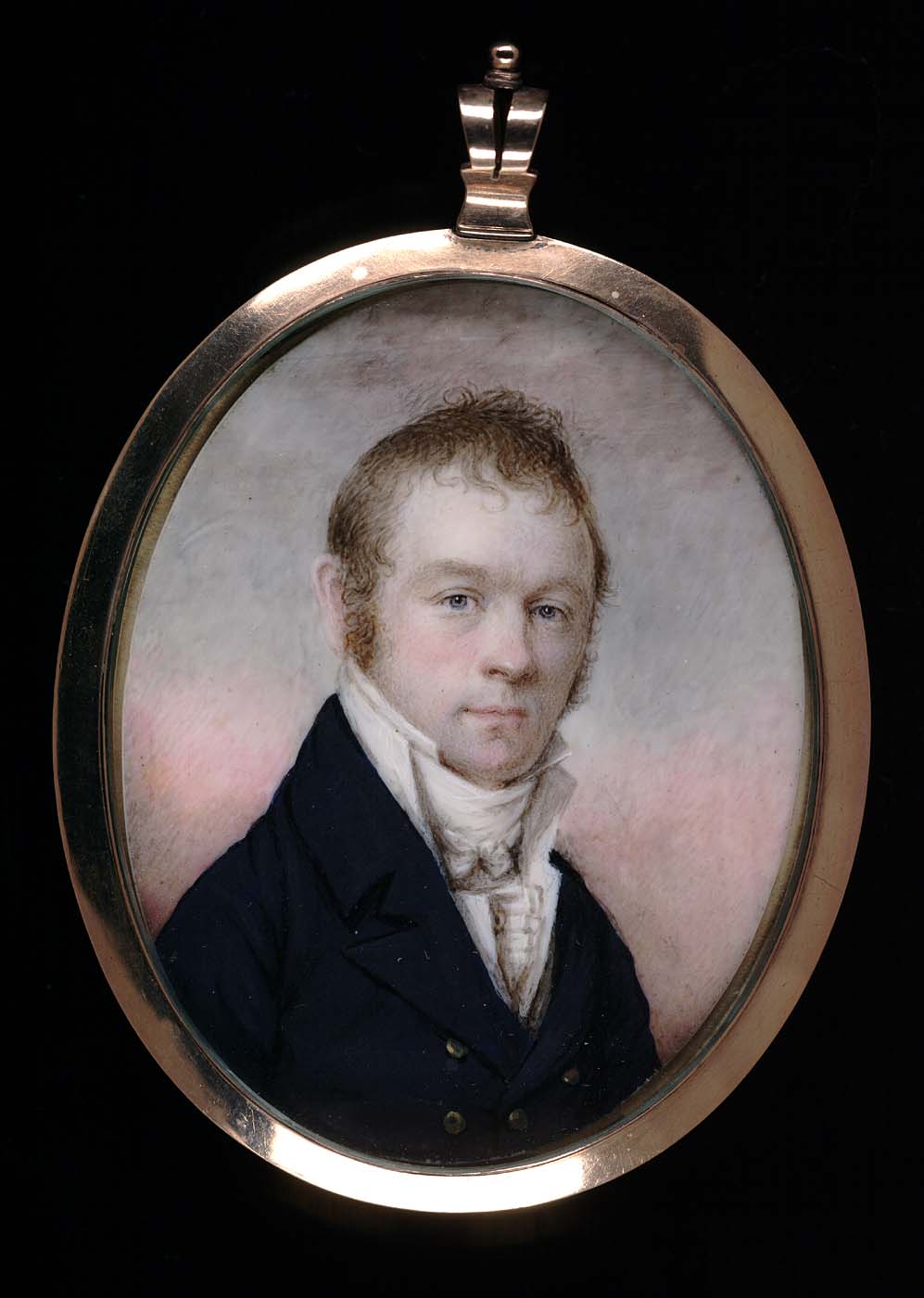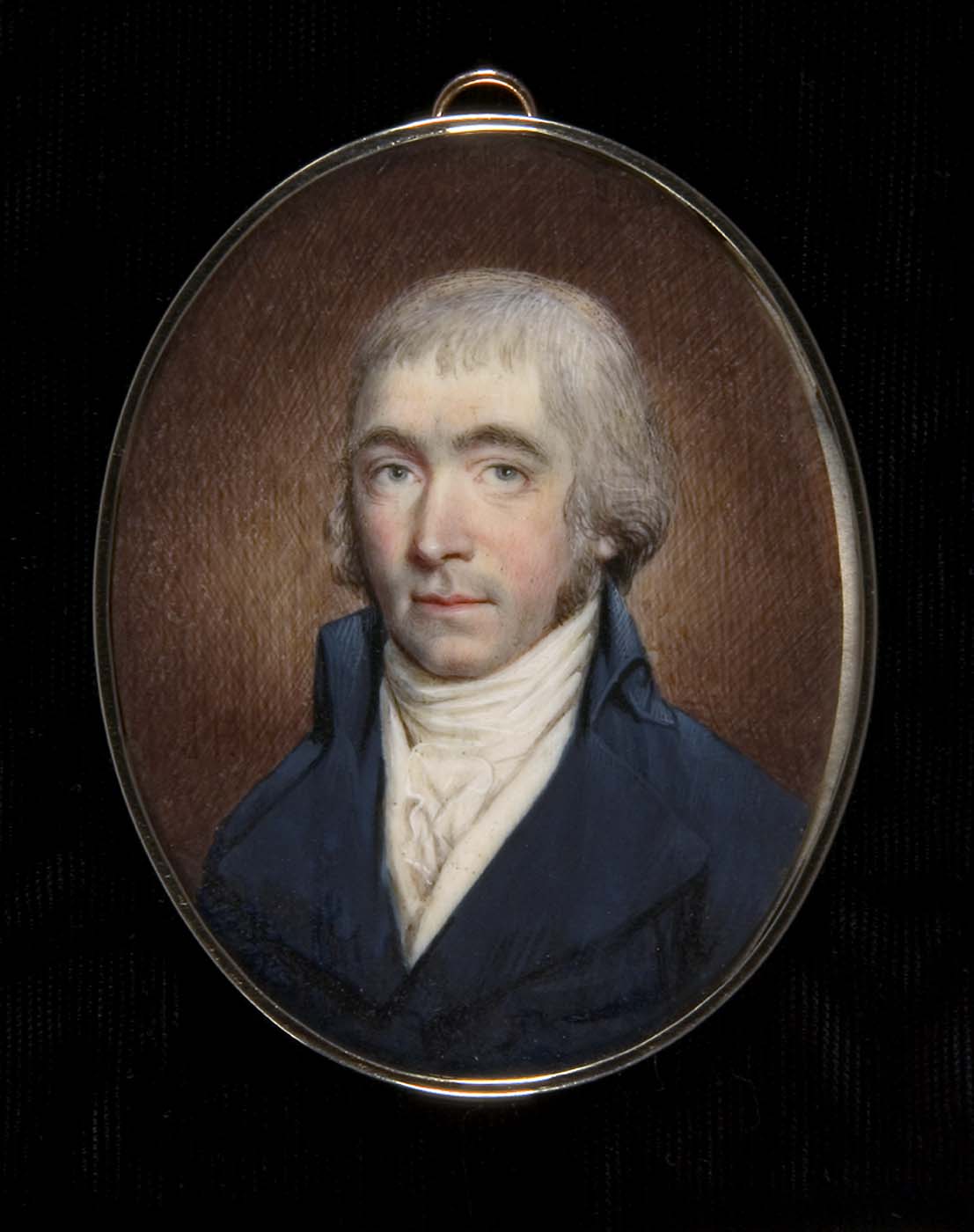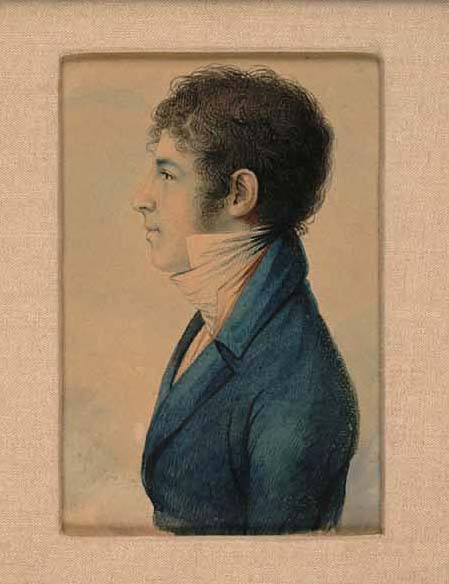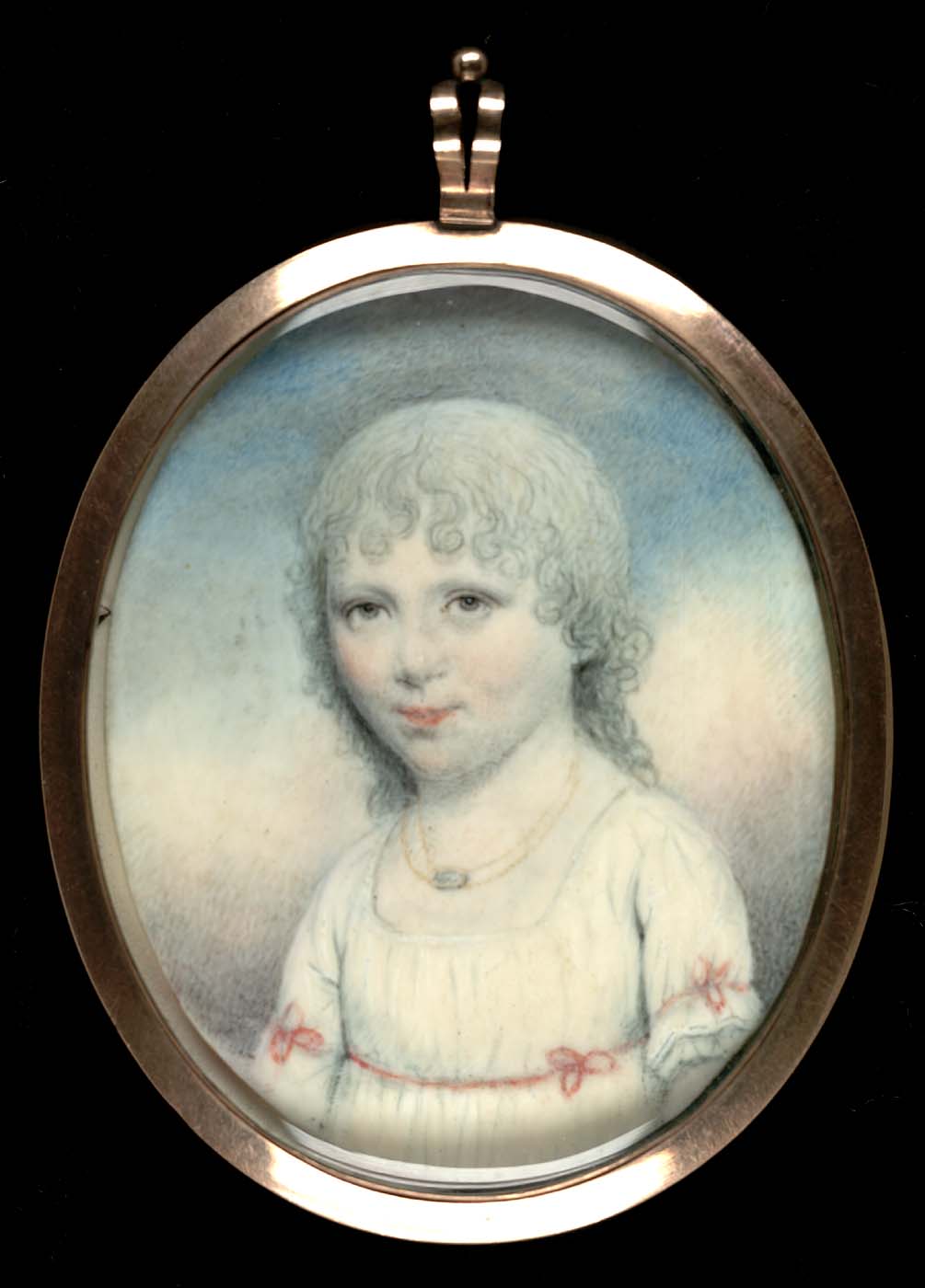Raphaelle Peale
Born 17 February 1774, Annapolis, Md., eldest son of Charles Willson Peale to survive infancy. Studied with his father, with whom he also collaborated on portraits. 1792, trip to South America to collect specimens for "Peale's Museum," Philadelphia. 1794, exhibited five portraits and eight other paintings, probably still-lifes, at the Columbianum, Philadelphia. With his brother Rembrandt, traveled to Charleston, S.C., then Baltimore, where they attempted unsuccessfully to establish a museum, 1797–99. Late 1790s, painted mostly miniatures.
Brief financial success with the physiognotrace, a profile making machine, with which he toured Virginia, 1803–5. August 1808, hospitalized with alcoholic "delirium"; suffered severely from gout. By late 1813, unable to walk without crutches.
From 1810, concentrated on still-life painting almost exclusively, becoming America's first professional still-life painter. Exhibited frequently at Pennsylvania Academy of the Fine Arts and elsewhere, especially from 1814–18. Financially dependent for most of his life on his father. Died after night of heavy drinking, 5 March 1825, Philadelphia.
William Kloss Treasures from the National Museum of American Art (Washington, D.C. and London: National Museum of American Art with the Smithsonian Institution Press, 1985



